Last updated November 2018
Checkbook is working with ChoosingWisely.org to help tell patients and doctors about its efforts to reduce unneeded medical care
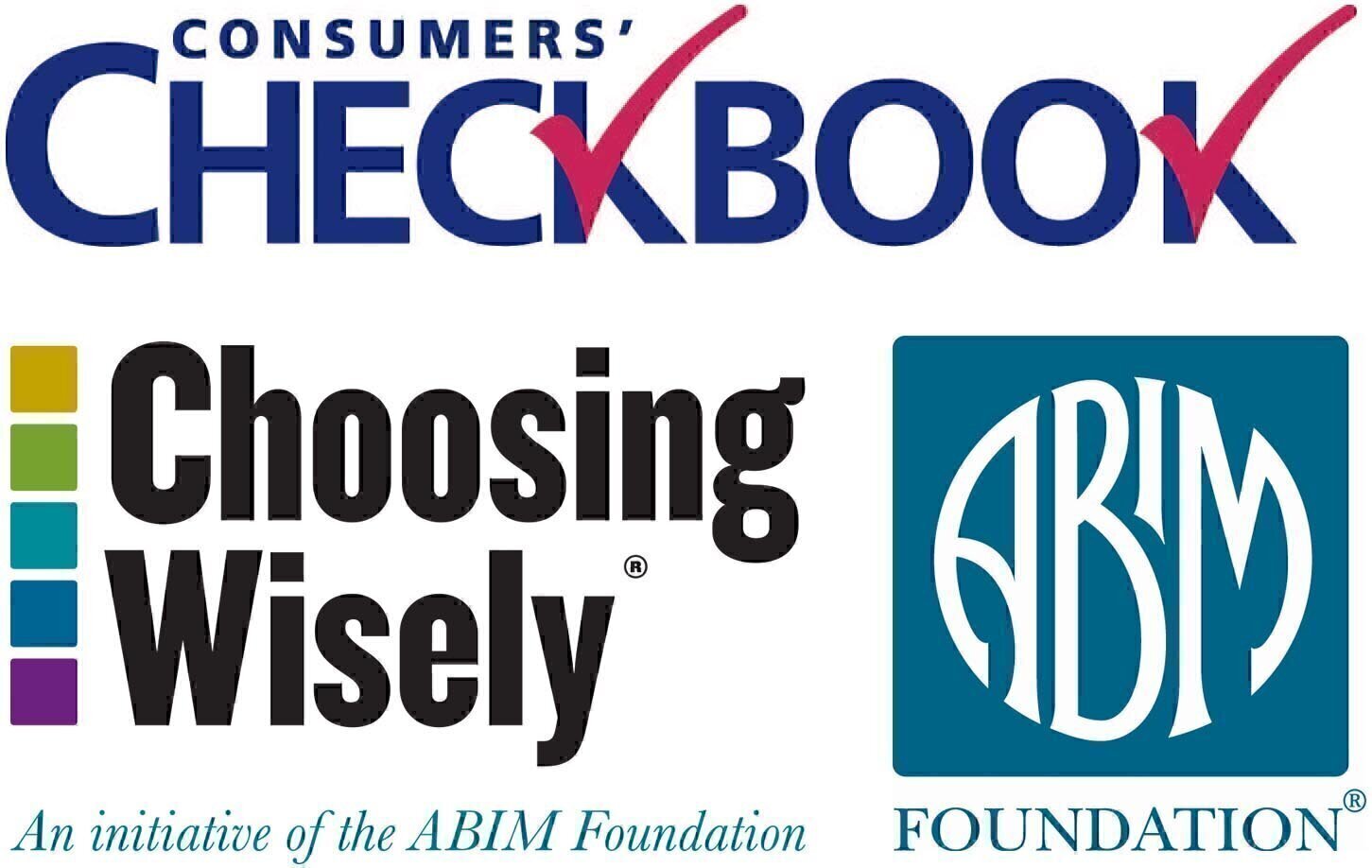
Our ratings of doctors and many other types of healthcare providers can help you find the best medical care. But even the best professionals can prescribe unnecessary treatment, wasting your money and possibly even harming you.
While U.S. healthcare costs continue to grow at record rates, there’s little or no compelling evidence that all of this increased spending results in improved care. One reason that higher costs may not produce better results is that doctors too often prescribe—sometimes at the request of their patients—unneeded treatments.
How bad is it? The Congressional Budget Office recently estimated that up to 30 percent of the costs of medical care delivered in the U.S.—more than $250 billion—pays for unnecessary tests, procedures, doctor visits, hospital stays, and other services that may not actually improve patient health—and in some cases increase the risk of further harm.
For example:
- Tens of thousands of brain scans are performed each year on headache sufferers. But unless a patient presents specific risk factors for structural disease, or other clinical screenings indicate the patient might have a structural disease, a CT (computed tomography) scan is very unlikely to affect how the headache is treated.
- For people with no family history of colon cancer, or no symptoms of it, clinical guidelines recommend getting an initial colonoscopy no later than age 50. And if your colonoscopy produces a clear result, you shouldn’t have one for another 10 years. Yet annually more than 14 million colonoscopies are performed, often unnecessarily since premature or too-frequent tests are unlikely to detect cancer—and might result in surgical complications.
- Common treatments for prostate cancer are surgery and radiation. However, patients and doctors should first discuss and consider an approach called “active surveillance” or “watchful waiting” for low-risk prostate cancer. Often, men with prostate cancer are at little risk from it: The tumor is small, contained within the prostate, and probably growing so slowly that it will not become life-threatening. In active surveillance, doctors watch patients’ conditions closely and surgery or radiation is done only if needed. By taking this conservative approach, patients avoid the serious side effects and risks of complications from treatment.
Clearly, more must be done to rein in costly and potentially risky unnecessary medical care. One solution lies in better educating doctors and patients about procedures that are common but unneeded, and encouraging doctors and patients to discuss their necessity and effectiveness before they are performed.
 That’s what Choosing Wisely does. An initiative of the ABIM Foundation, a supporting organization of the American Board of Internal Medicine, the campaign provides recommendations for doctors and patients. Choosing Wisely encourages medical specialty societies to identify commonly used procedures whose necessity should be questioned and discussed, and then issues their findings in clinical lists and patient materials focused on “Things Providers and Patients Should Question.”
That’s what Choosing Wisely does. An initiative of the ABIM Foundation, a supporting organization of the American Board of Internal Medicine, the campaign provides recommendations for doctors and patients. Choosing Wisely encourages medical specialty societies to identify commonly used procedures whose necessity should be questioned and discussed, and then issues their findings in clinical lists and patient materials focused on “Things Providers and Patients Should Question.”
The aim is to promote dialogue and urge patients to have only the tests or treatments that are:
- Supported by evidence
- Don’t duplicate already-performed tests or procedures
- Free from harm
- Necessary
So far more than 80 medical specialty societies representing hundreds of thousands of physicians have made more than 550 recommendations related to overused medical tests, treatments, and drugs, and the campaign has published more than 100 consumer bulletins summarizing these recommendations.
Although there is still much work to do, the Choosing Wisely campaign has galvanized efforts nationwide to curb overuse of unnecessary tests and treatments. For example, its initiatives to lower prescriptions of unneeded antibiotics continue to sharply decrease inappropriate use. And its recommendations on unneeded imaging studies have helped reduce those tests by more than 60 percent at some hospitals.
Click here to search all of the consumer bulletins issued by Choosing Wisely. If your doctor prescribes one of these treatments or tests, check the Choosing Wisely bulletin for it to discuss risks and cost—and whether you really need it. Below, we summarize 22 of these bulletins, and in future will regularly spread the word about other important topics covered by Choosing Wisely.
Although these advisories are for you to use when talking with your healthcare providers, they are not substitutes for medical advice and treatment. They are excerpted from consumer bulletins produced as a collaboration between the indicated medical specialty societies, the ABIM Foundation, and Consumer Reports.
Allergy Tests
 See your doctor before testing for allergies. If an exam and a review of your medical history point to allergies, additional testing by a specialist may be warranted.
See your doctor before testing for allergies. If an exam and a review of your medical history point to allergies, additional testing by a specialist may be warranted.
Many allergy tests performed without proper medical evaluation—such as the free screenings offered by many drugstores or with at-home testing kits—are unreliable or misleading. These tests may indicate that you have a nonexistent allergy, which can lead to unnecessary changes in your lifestyle—while you continue to suffer from symptoms caused by something else.
For example, if a test finds you are allergic to foods such as wheat, soy, eggs, or milk, you may stop eating those foods and end up with a poor diet, unnecessary worries and frustration, or
extra food costs. If the test says you are allergic to cats or dogs, you may give up a beloved pet. And tests for chronic hives can show something that may look abnormal but is not a problem, leading to even more tests and medical appointments.
Wrong or unnecessary tests also waste money. A skin allergy test can cost from $60 to $300, a blood test from $200 to $1,000. A blood test for food allergies can cost hundreds of dollars, and testing for chronic hives can cost thousands.
And without a doctor’s exam, the test may not even tell you what is causing your symptoms or how to treat them.
If you have allergy symptoms, start by trying over-the-counter drugs and limiting your exposure to the most common allergens. If these steps do not alleviate your symptoms, then it’s time to see a doctor for tests.
Adapted from Choosing Wisely bulletins produced by the American Academy of Allergy, Asthma & Immunology.
Alzheimer’s Disease Testing
Although it is normal to forget things as you age, many older people worry that they are getting Alzheimer’s disease when they can’t remember things. A PET (positron emission tomography) scan of the brain can help diagnose Alzheimer’s, but you should first have a complete medical exam. These scans can lead to the wrong diagnosis, or a doctor who gets the results may assume you have Alzheimer’s and not look for other causes that might be treatable.
 Although Alzheimer’s is the leading cause of memory loss and thinking problems among older people, other medical conditions can produce the same symptoms, including strokes, thyroid problems, drug interactions, alcoholism, and vitamin deficiencies. Unlike Alzheimer’s, these may be treatable.
Although Alzheimer’s is the leading cause of memory loss and thinking problems among older people, other medical conditions can produce the same symptoms, including strokes, thyroid problems, drug interactions, alcoholism, and vitamin deficiencies. Unlike Alzheimer’s, these may be treatable.
Medicines, including over-the-counter drugs and herbs, can also cause memory loss and thinking problems. So if you have symptoms, it is important to determine their cause. You may also have an MRI or CT scan to rule out problems that present symptoms similar to Alzheimer’s, such as a stroke or a blow to the head.
If exams show serious memory loss, and your doctor cannot find its cause, then have the PET scan. But be aware that PET scans cannot prove that you have Alzheimer’s, which is usually indicated by abnormal cell clumps in the brain. If a PET scan does not show abnormal cell clumps in the brain, it’s much less likely that you have Alzheimer’s. But even if clumps are detected you might not have Alzheimer’s—and having these clumps does not mean that you will get Alzheimer’s in the future.
The PET scan exposes you to a small amount of radiation, and it is sometimes combined with a CT scan, which increases the amount of radiation exposure. Because the harmful effects of radiation can accumulate over time, it’s best to avoid radiation whenever possible.
PET scans can also cost several thousands of dollars, and many health insurance plans don’t cover them.
Learning that you have early-stage Alzheimer’s can help you plan for the future, and there are Alzheimer’s drugs that you may want to try. However, most of them will not relieve symptoms or slow down the disease.
Adapted from Choosing Wisely bulletins produced by the Society of Nuclear Medicine and Molecular Imaging.
Antibiotic Treatment in the Hospital
You might get antibiotics right away when you check in to the hospital, especially if there is risk of a serious infection. Often doctors want to start treatment immediately—frequently with broad-spectrum antibiotics—even before they get test results. But once test results are in, doctors should review the antibiotics they’ve prescribed to make sure they’re needed. If test results don’t indicate an infection and you’re doing well, the doctor can usually stop the antibiotics. If the tests do show an infection, the doctor can often reduce treatment to a single antibiotic.
Reducing antibiotics, called “de-escalation,” can improve your treatment and helps prevent antibiotic overuse, which can contribute to formation of drug-resistant bacteria. This leads to infections that last longer and cost more to treat. They can spread to family and friends.
Antibiotics also have side effects. Broad-spectrum antibiotics can lead to a dangerous form of diarrhea called “C. diff,” which can require removal of the bowel and kills about 15,000 people in the U.S. each year.
Other possible side effects include vaginal infections, nausea, and vomiting. They can also cause serious allergic reactions such as rashes, swelling of the face and throat, and breathing problems. Some antibiotics have been linked to torn tendons and permanent nerve damage.
Antibiotic overuse squanders money. The broad-spectrum antibiotics often prescribed when patients first enter hospitals usually cost more than narrow-spectrum drugs, require an intravenous (IV) line that prolongs hospital stays, and can induce more costly side effects and complications.
There are situations in which you continue to need broad-spectrum antibiotics; for example, if you’re not recovering and tests show that drug-resistant bacteria are causing your infection, tests could not be performed, or test results were inconclusive.
Adapted from Choosing Wisely bulletins produced by the Society for Healthcare Epidemiology of America.
Antibiotics for Colds, Flu, and Other Respiratory Illnesses in Adults
If you have a sore throat, cough, or sinus pain, you might expect to take antibiotics. After all, you feel bad, and you want to feel better fast. But antibiotics won’t cure most colds, flus, or respiratory infections, and overuse of antibiotics is a serious problem. Wide use of them breeds “superbugs,” bacteria that become resistant to antibiotics.
 Most respiratory infections are caused by viruses, which antibiotics can’t cure. Viruses cause:
Most respiratory infections are caused by viruses, which antibiotics can’t cure. Viruses cause:
- All colds and flu.
- Almost all sinus infections.
- Most bronchitis (chest colds).
- Most sore throats, especially those accompanied by a cough, runny nose, hoarse voice, or mouth sores.
Even when effective, antibiotics carry risks. Side effects include nausea, vomiting, severe diarrhea, vaginal infections, nerve damage, torn tendons, and life-threatening allergic reactions.
You may need an antibiotic if:
- You have a sinus infection that doesn’t get better in 10 days.
Or it gets better and then suddenly gets worse. - You have a fever of 102° F accompanied by facial pain for three or more days in a row, possibly with discolored thick mucus.
- You have bacterial pneumonia (which should be diagnosed with a chest X-ray).
- You or someone in your family has whooping cough (diagnosed with a throat swab).
- You have strep throat (diagnosed with a throat swab).
If your doctor does prescribe antibiotics, follow the directions carefully and take all your pills. This also helps prevent the growth of superbugs.
Adapted from Choosing Wisely bulletins produced by the Infectious Diseases Society of America.
Antibiotics for Ear Infections
Ear infections are very common, especially in children. While antibiotics are sometimes needed to treat bacterial ear infections, in most cases they are unnecessary—and can be harmful.
 Antibiotics don’t cure ear infections caused by viruses. Viral ear infections and even many bacterial infections usually disappear on their own in two or three days, especially in patients over two years old.
Antibiotics don’t cure ear infections caused by viruses. Viral ear infections and even many bacterial infections usually disappear on their own in two or three days, especially in patients over two years old.
Instead, start by treating the pain with acetaminophen or ibuprofen, and wait a few days to see a doctor. If symptoms do not improve or worsen, ask your doctor if antibiotics are necessary or if a wait- and-see approach may work. Patients with ear infections managed this way recover just as well as those who immediately take antibiotics.
Overuse of antibiotics is a problem. When patients take antibiotics at the first sign of an ear infection, they are more likely to experience vomiting, diarrhea, and allergic reactions
because of the medicine. Also, antibiotics can kill “friendly” germs in the body and cause other problems, like diarrhea.
Antibiotics can help drug-resistant bacteria grow. These bacteria are harder to kill and cause illnesses that are harder to cure and more costly to treat.
Antibiotics can also be a waste of money. Prescription antibiotics to treat a mild ear infection can cost from $11 to $52. Drug-resistant infections can lead to more doctor visits and require medicines that cost even more.
Sometimes immediate treatment is important, especially for:
- Infants six months old or younger.
- Babies age six months to two years who have moderate to severe ear pain.
- Children age two or older who have a fever of 102.2?F or higher.
- Children with another condition that could make it harder to heal, including cleft palate, Down syndrome, immune disorders, or cochlear implants.
If antibiotic treatment is necessary, ear drops kill bacteria faster and more effectively than oral antibiotics for most types of infections, with fewer side effects.
Adapted from Choosing Wisely bulletins produced by the American Academy of Family Physicians.
Antibiotics for Pink Eye
Pink eye, or conjunctivitis, is a common condition, especially in children. Doctors often prescribe antibiotic eye drops or ointments for pink eye, but antibiotics seldom help and can do more harm than good.
Pink eye is usually caused by a virus. Viral pink eye usually disappears on its own in a week or so. Antibiotics do not kill viruses.
 Pink eye also can be an allergic reaction to pollen, dust mites, pets, contact lenses, or cosmetics. This kind of pink eye improves when you avoid the things you are allergic to. Antibiotics don’t help allergies.
Pink eye also can be an allergic reaction to pollen, dust mites, pets, contact lenses, or cosmetics. This kind of pink eye improves when you avoid the things you are allergic to. Antibiotics don’t help allergies.
A third type of pink eye is caused by bacteria. Although this can be helped by an antibiotic, mild bacterial pink eye almost always disappears within 10 days without medication.
Antibiotics sometimes do more harm than good. In eye-drop form they have side effects, including itching, stinging, burning, swelling, and redness. They cause allergic reactions in some people, and can help harder-to-kill drug-resistant bacteria grow.
You might need antibiotic eye drops and ointments for bacterial pink eye if your symptoms are severe, your immune system is weak due to a medication you are taking or another illness, or your infection does not disappear in a week without treatment.
Adapted from Choosing Wisely bulletins produced by the American Academy of Ophthalmology.
Blocked Leg Arteries
The arteries in your legs and feet can get blocked, just like the arteries in your heart. When this happens, less blood flows to your legs, a condition known as peripheral artery disease (PAD).
Occasionally, if your leg arteries are badly blocked, you may develop foot pain while resting or a sore that won’t heal. In these cases you may need arterial bypass surgery or angioplasty to remove the blockages. But while some doctors mistakenly recommend surgery, few PAD sufferers develop problems that need it. Even if you do not have symptoms, surgery won’t help you feel better or prevent future leg problems.
 To control PAD, don’t smoke, walk every day, and work with your doctor to control risk factors such as diabetes, high blood pressure, and high cholesterol.
To control PAD, don’t smoke, walk every day, and work with your doctor to control risk factors such as diabetes, high blood pressure, and high cholesterol.
Even if you have problems from PAD, you may be better off not undergoing a procedure. Studies show that in some cases walking every day can relieve symptoms just as well as angioplasty.
Bypass surgery on your legs entails all the dangers of major surgery. It takes two to three weeks for the wound to heal, and risks include infection, bleeding from the wound, and complications from anesthesia, such as trouble breathing or pneumonia. And about three out of 100 people who undergo bypass surgery have a heart attack or die.
Angioplasty is not as hard on your body as surgery, and the recovery is faster. But stents may not provide a lasting treatment, and the original symptoms can return within a year. In rare cases when a stent is being inserted, dangerous bleeding occurs and the stent collapses.
Surgery and angioplasty cost a lot—including your hospital stay, from $13,000 to more than $23,000.
You and your doctor should consider surgery or angioplasty only if your symptoms are severe enough to limit your lifestyle or ability to work, and simpler treatments have not helped.
Adapted from Choosing Wisely bulletins produced by the Society for Vascular Medicine.
Blood Tests When You’re in the Hospital
When you have a hospital stay, sometimes you need a lot of blood tests, especially if you are very sick. But many patients get more tests than they need.
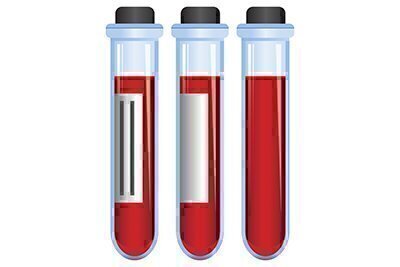 For example, many patients get two common tests: A complete blood count (CBC), which checks your blood for signs of infection, immune system problems, bleeding problems, and anemia; and a blood chemistry panel, which gives your doctor information about your muscles, bones, heart, and other organs, and checks your blood sugar, calcium, and other minerals. While many patients need these tests, if their results stay the same after a day or two, they may not need them again, as more tests won’t tell doctors anything new.
For example, many patients get two common tests: A complete blood count (CBC), which checks your blood for signs of infection, immune system problems, bleeding problems, and anemia; and a blood chemistry panel, which gives your doctor information about your muscles, bones, heart, and other organs, and checks your blood sugar, calcium, and other minerals. While many patients need these tests, if their results stay the same after a day or two, they may not need them again, as more tests won’t tell doctors anything new.
There’s no harm in getting fewer tests. One study showed that reducing common tests did not affect patient health or safety. Getting too many tests has risks, including anemia, increased risk of infections, and less sleep if nurses wake up patients to do them.
Ask your doctor why you need a blood test and whether it gives new information or is likely to help your treatment.
Adapted from Choosing Wisely bulletins produced by the Society of Hospital Medicine.
Blood Transfusions for Anemia in the Hospital
 Getting a blood transfusion in the hospital can save your life. You may need a lot of blood if you are bleeding heavily due to an injury or illness.
Getting a blood transfusion in the hospital can save your life. You may need a lot of blood if you are bleeding heavily due to an injury or illness.
But if you have anemia, research indicates you seldom need a transfusion. In most cases, anemia patients need only one unit of blood, or none at all.
There are a number of reasons you may become anemic during a hospital stay, including:
- Bleeding
- Frequent blood draws
- Liver and kidney damage
- A chronic condition or disease
- Medications
- Kidney disease
- Chronic infections
- Cancer
Anemia is measured in hemoglobin levels. A normal level is 11 to 18 grams per deciliter (g/dL), depending on your age and gender, but 7 to 8 g/dL is a safe level. Your doctor should use just enough blood to get to this level. One unit of blood is often enough.
Some doctors believe that hospital patients who fall below 10 g/dL should get a blood transfusion. But recent research found that many patients with levels between 7 and 10 g/dL may not need a blood transfusion, and that one unit of blood is usually as good as two, and may even be safer. In fact, some patients in intensive care do better when they receive less blood.
Blood transfusions can cost a lot: A unit of blood usually costs about $200 to $300 plus costs for storage and processing as well as hospital and equipment fees. Costs can be much higher if the transfusion causes an infection or serious problem. Also, if you use only as much blood as you need, you help maintain a blood supply for other people.
Adapted from Choosing Wisely bulletins produced by the American Society of Hematology.
Bone-Density Tests
 Many people get bone-density tests every few years to look for serious bone loss. But because most men and women under age 65 don’t have any bone loss or have only minor loss, they probably don’t need the test.
Many people get bone-density tests every few years to look for serious bone loss. But because most men and women under age 65 don’t have any bone loss or have only minor loss, they probably don’t need the test.
These scans have risks. A bone-density test gives out a small amount of radiation, and the harmful effects of radiation can add up. And the drugs used to treat bone loss are overprescribed—and have risks. Fosamax (generic alendronate), Boniva (generic ibandronate), and Actonel (generic risedronate) can cause bone, eye, joint, and muscle pain, cracks in the femur (thighbone), bone loss in the jaw, and heart rhythm problems. Other drugs used to treat bone loss also have risks, including blood clots, heart attacks, strokes, and serious infections.
Many people are given drugs because they have mild bone loss. But, there is little evidence that these drugs help them. And, even if the drugs do help, they may only help for a few years.
Some patients should get a bone scan. Women should get one at age 65; men at age 70 should talk to their doctors about whether one is needed. But younger women, and men ages 50 to 69, should consider the test only if they have risk factors for serious bone loss, including:
- Breaking a bone in a minor accident.
- Having rheumatoid arthritis.
- Having a parent who broke a hip.
- Smoking.
- Drinking heavily.
- Having a low body weight.
- Using corticosteroid drugs for three months or more.
- Having a very low vitamin D level.
Adapted from Choosing Wisely bulletins produced by the American Academy of Family Physicians.
Cervical Cancer Screening
Cancer of the cervix kills more than 4,000 women in the U.S. every year, but almost all of those cases can be prevented.
A sexually transmitted virus called HPV causes almost all cases of cervical cancer, and the HPV vaccine prevents most HPV. The best time to get the vaccine is between ages 11 and 12, but it can
be given to women (and men) up to age 26.
 Routine screening is also important. Women ages 21 to 65 should get regular cervical cancer screening. Depending on a woman’s age, this can be done with Pap tests, HPV tests, or both. The tests can find abnormal cells early, and the cells can be treated before they turn into cancer.
Routine screening is also important. Women ages 21 to 65 should get regular cervical cancer screening. Depending on a woman’s age, this can be done with Pap tests, HPV tests, or both. The tests can find abnormal cells early, and the cells can be treated before they turn into cancer.
While most women should follow the screening advice, some women don’t need certain tests or treatments. In the past, doctors thought that abnormal Pap tests always indicated cervical cancer, but now we know that isn’t so. Minor abnormalities
usually don’t turn into cancer. Most disappear on their own in a year or two, without any treatment.
If you keep having abnormal test results, doctors usually perform
a colposcopy, in which the doctor examines the cervix and may remove some abnormal cells. These are examined to determine if they are pre-cancer cells that might turn into cancer.
Because treatments for pre-cancers are minor surgical procedures, there are risks. Some can increase the risk of complications during pregnancy, such as premature birth. You should get treatment only if tests show that you have pre-cancer cells (also called severe dysplasia).
Adapted from Choosing Wisely bulletins produced by the American Society for Colposcopy and Cervical Pathology.
Colonoscopy
Colonoscopy provides the most accurate test for cancer of the colon and rectum, and is proven to detect the disease early and save lives.
But having a colonoscopy more than once every five or 10 years usually isn’t necessary. Polyps in the colons or rectums of adults are common and usually harmless. But some polyps—known as
adenomas—may eventually turn into cancer.
 Doctors can spot and remove polyps during a colonoscopy. If the test doesn’t find adenomas or cancer, and you don’t have risk factors for the disease, your chance of developing cancer is low for the next 10 years. That’s because the test misses very few adenomas, and colorectal cancer grows slowly. Even if one or two small, low-risk adenomas are removed, you’re unlikely to develop cancer for at least five years, and repeating the test sooner provides little benefit. In general, only patients with larger, more serious polyps need colonoscopies more often than every five years.
Doctors can spot and remove polyps during a colonoscopy. If the test doesn’t find adenomas or cancer, and you don’t have risk factors for the disease, your chance of developing cancer is low for the next 10 years. That’s because the test misses very few adenomas, and colorectal cancer grows slowly. Even if one or two small, low-risk adenomas are removed, you’re unlikely to develop cancer for at least five years, and repeating the test sooner provides little benefit. In general, only patients with larger, more serious polyps need colonoscopies more often than every five years.
Although colonoscopy is overall a safe procedure, there are risks. Occasionally patients suffer heavy bleeding, tears in the colon, inflammation or infection of pouches in the colon known as diverticulitis, severe abdominal pain, and problems for people
with heart or blood vessel disease. Some complications lead to blood transfusions, surgery, hospitalization, or, rarely, death.
The test also has inconveniences. You have to restrict your diet and take laxatives beforehand. Because the exam requires sedation, someone has to drive you home, and you may miss a day of work.
It also can be expensive. A colonoscopy typically costs about $1,100, more if you need polyp removal.
So when is it warranted?
Colon-cancer screening should begin no later than age 50 for most people. If a colonoscopy doesn’t find adenomas or cancer, and you don’t have risk factors, the next test should be in 10 years. If one or two small, low-risk adenomas are removed, the exam should be repeated in five to 10 years. But ask your doctor when and how often to have a colonoscopy if you have inflammatory bowel disease; a history of multiple, large, or high-risk adenomas; or a parent, sibling, or child who had colorectal cancer or adenomas. Routine checks usually aren’t needed after age 75.
Adapted from Choosing Wisely bulletins produced by the American Gastroenterological Association.
Dental Fillings that Contain Mercury
Many of us have amalgam (silver) fillings or dental reconstructive materials in some of our teeth. These materials contain mercury and other metals, such as zinc, tin, copper, or silver. Although dentists have used these amalgams for nearly 200 years, some people think they are dangerous because of the mercury.
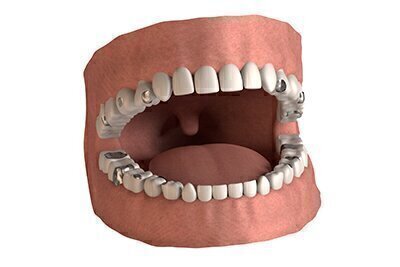 Citing this possible danger, many dentists advise their patients to replace amalgam fillings with composite fillings that don’t contain mercury. But this isn’t necessary; if a dentist advises you replace amalgam fillings, get a second opinion.
Citing this possible danger, many dentists advise their patients to replace amalgam fillings with composite fillings that don’t contain mercury. But this isn’t necessary; if a dentist advises you replace amalgam fillings, get a second opinion.
Although dental fillings do contain very small amounts of mercury, the amount that might leak out of the filling is not dangerous and, except for very rare allergic reactions, causes no harm. You consume much more mercury from eating certain seafoods. In fact, removing a filling releases more mercury than leaving the filling alone (and the amount released is still not dangerous).
Also, the heavy drilling to remove and replace fillings can weaken teeth, requiring other dental work such as crowns or caps.
To replace several fillings, your dentist might use a general anesthetic, which carries a small risk.
Often these replacements are expensive. A basic filling can cost $80 to $220 or more. To repair fillings can cost $400 or more. If a crown is needed, that costs about $850. It can cost thousands of dollars to replace all your fillings.
Adapted from Choosing Wisely bulletins produced by the American College of Medical Toxicology and the American Academy of Clinical Toxicology.
EKGs and Exercise Stress Tests
EKGs and stress tests determine if you are at risk for heart disease and heart attack. You may need these tests if you have symptoms of heart disease, like chest pain. Or you may need them if you already have heart disease, have a high risk for heart disease, or have symptoms like chest pain. These tests can help your doctor
evaluate how your heart is working and decide how to treat
the problem.
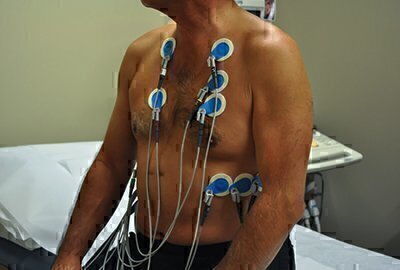 But in other cases, think twice about having these tests; there are better and less costly ways to prevent heart disease. And although EKGs and exercise stress tests won’t harm you, unnecessary tests can lead to unnecessary follow-up tests and treatments, which can lead to other tests and treatments that do carry risks.
But in other cases, think twice about having these tests; there are better and less costly ways to prevent heart disease. And although EKGs and exercise stress tests won’t harm you, unnecessary tests can lead to unnecessary follow-up tests and treatments, which can lead to other tests and treatments that do carry risks.
For example, if the results of your EKG are unclear, your doctor may order a coronary angiography that can expose you to as much radiation as 600 to 800 chest X-rays.
EKGs and exercise stress tests can also lead to unnecessary and possibly dangerous treatments. You may be given drugs you do not need. Or you may undergo a procedure called angioplasty to force open the arteries in your heart. While this
can help some people, lifestyle changes and medicine can be just as good. Angioplasty causes a heart attack in one to two out of every 100 patients.
The tests can also be a waste of money. An EKG costs about $50, and an exercise stress test costs $175 or more. And if they lead to more tests and treatments, it can cost thousands of dollars.
In some cases it can be important to get an EKG or stress test. If you have a history of heart disease or symptoms of it—chest pain, shortness of breath, irregular heartbeat, or heavy heartbeats—you probably should get the tests. And you may need these tests if you have diabetes or other risks.
Adapted from Choosing Wisely bulletins produced by the American Academy of Family Physicians.
Genetic Testing
Genetic testing can help identify an inherited condition or disease risk. But a genetic test is not always the best way to find an inherited condition or disease risk. A routine blood test or procedure might be just as good, and could be cheaper and more easily available.
 Before you have any genetic test, discuss your reasons for wanting it with your doctor or a medical geneticist. Review your reasons for wanting the test, make sure you get the right tests, and prepare yourself and your family for possible findings.
Before you have any genetic test, discuss your reasons for wanting it with your doctor or a medical geneticist. Review your reasons for wanting the test, make sure you get the right tests, and prepare yourself and your family for possible findings.
There are many genetic tests. There are tests that examine one gene, many genes, or most of your genes at one time. The website of the American College of Medical Genetics and Genomics (www.acmg.net) has a list of genes for inherited conditions that can be treated or prevented.
Some tests are better than others. For example, one genetic test for Alzheimer’s looks for a variant in the APOE gene that can increase the risk of developing Alzheimer’s, usually after age 60. But the APOE test result cannot predict who will develop Alzheimer’s. Some people have the variant but never get the disease; others get the disease but do not have the variant.
Other genetic tests for finding the cause for inherited Alzheimer’s disease can be useful if you or a close relative developed the disease before age 60, or if several relatives have the disease. If the disease occurs at an early age, it is more likely to be genetic. In this case, testing might provide you and your family with useful information.
Sometimes patients think genetic tests will help predict risks that can’t be detected by the tests. For example, genetic tests can’t determine whether you are at risk for hereditary blood clot diseases. Some people have the gene variant but do not get clots; others get clots but do not have the variant. Testing your blood homocysteine level usually provides better information than genetic testing.
While some genetic tests might benefit many patients by providing early warnings of possible diseases, “passing” these tests might lead to a false sense of security. For example, common BRCA and BRCB tests of genes that might carry certain types of breast and ovarian cancer look only at two genes. You can still get breast or ovarian cancer if those genes don’t test positive for it—hundreds of other genes affect your chances of getting cancer, as does your environment, diet, and more. There is a big concern that patients will interpret that test as telling them they are less likely to develop breast cancer and they won’t get mammograms as often as they should.
Because genetic information generally doesn’t change over your lifetime, if you do get tests, don’t repeat them.
Adapted from Choosing Wisely bulletins produced by the American College of Medical Genetics and Genomics.
Heart Imaging Tests Before Surgery
If you’re considering surgery, you may wonder if you need an imaging test of your heart, such as an echocardiography or a cardiac CT scan, to make sure it is safe for you to have the surgery. But if you are not having heart surgery, and you don’t have symptoms or risk factors for heart disease, imaging tests usually don’t help. The risk of heart problems during minor surgery is very low, and doctors can’t do much more to further lower the risk. And having a heart
imaging test is not likely to lower your risk anyway.
 Even major surgery is safe for most healthy people who feel well, are moderately physically active, and show no symptoms of heart disease. In this case, all you usually need before surgery is a comprehensive medical history and physical exam.
Even major surgery is safe for most healthy people who feel well, are moderately physically active, and show no symptoms of heart disease. In this case, all you usually need before surgery is a comprehensive medical history and physical exam.
Heart imaging tests are usually safe, and some can be performed with little or no radiation. But if your risk of having a heart problem is low, the tests can produce false-positive results. This can cause anxiety, lead to more tests, and delay your surgery. For example, you might have a follow-up coronary angiography, which exposes you to more risks and radiation. The risks are low, but exposure to radiation accumulates over your lifetime; best to avoid X-rays whenever possible.
Heart imaging tests also cost a lot. An imaging stress tests costs
from $500 to $2,000; a cardiac CT scan costs from $500 to $600; a follow-up coronary angiography costs about $5,000. Consequently, the tests should be used only when the results would change the way your surgery is performed.
You may need an imaging test before surgery if:
- You have a known heart condition, such as coronary artery disease.
- You have possible symptoms of heart disease, such as chest pain, trouble breathing, or a loss of energy.
- You are going to have some kind of moderate-risk surgery, such as a knee or hip replacement.
- You are going to have a high-risk surgery and you have a high-risk medical condition, such as diabetes, kidney disease, heart disease or failure, or stroke.
Adapted from Choosing Wisely bulletins produced by the American College of Cardiology, American Society of Nuclear Cardiology, and American Society of Echocardiography.
Imaging Tests for Lower Back Pain
Patients with lower back pain too often get imaging tests—X-rays, CT scans, and MRIs—to determine its cause. But these tests rarely help.
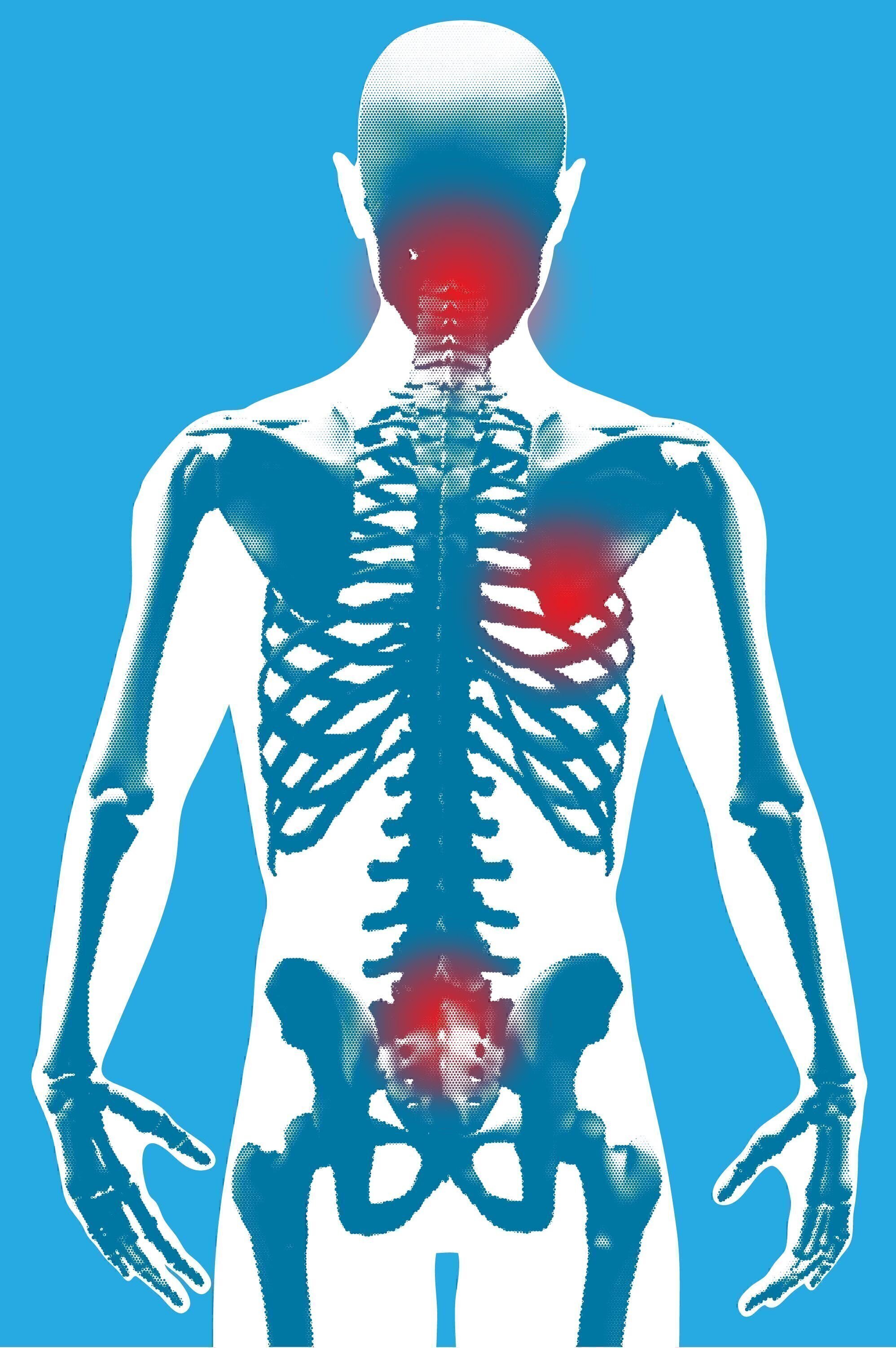 Most people with lower back pain feel better in about a month. People who get imaging tests for their back pain do not get better faster—and sometimes they feel worse than people who took over-the-counter pain medicine and performed simple actions, like walking, to help their pain. That’s because imaging tests can also lead to surgery and other treatments that you do not need. In one study, people who had an MRI were much more likely to undergo surgery than people who did not have an MRI—but surgery did not help them recover any faster.
Most people with lower back pain feel better in about a month. People who get imaging tests for their back pain do not get better faster—and sometimes they feel worse than people who took over-the-counter pain medicine and performed simple actions, like walking, to help their pain. That’s because imaging tests can also lead to surgery and other treatments that you do not need. In one study, people who had an MRI were much more likely to undergo surgery than people who did not have an MRI—but surgery did not help them recover any faster.
X-rays and CT scans use radiation. Because radiation has harmful effects that can add up, it is best to avoid radiation whenever possible.
Imaging tests can cost hundreds, or even thousands, of dollars depending on the test and where you have it. Why spend money on tests when they don’t help your pain?
In some cases, it’s okay for imaging tests to be performed right away. Talk to your doctor if you have back pain with any of the following symptoms:
- Weight loss that you cannot explain
- Fever over 102°F
- Loss of control of your bowel or bladder
- Loss of feeling or strength in your legs
- Problems with your reflexes
- A history of cancer
These symptoms can be signs of nerve damage or a serious problem, such as cancer or an infection in the spine.
Adapted from Choosing Wisely bulletins produced by the American Academy of Family Physicians, American College of Emergency Physicians, American College of Physicians, American Chiropractic Association, American Society of Anesthesiologists, American College of Occupational and Environmental Medicine, American Association of Neurological Surgeons, American Association of Neuromuscular & Electrodiagnostic Medicine, and North American Spine Society.
Imaging Tests for Headaches
Many people afflicted by very painful headaches want a CT scan or an MRI to determine if their headaches are caused by a serious problem, such as a brain tumor. But most of the time you don’t need these tests.
A CT scan or an MRI rarely reveals why the headache occurs, and they do not help ease the pain.
 A doctor can diagnose most headaches during an office visit. If your medical history and exam are normal, imaging tests seldom indicate a serious problem. Most headaches are caused by tension.
A doctor can diagnose most headaches during an office visit. If your medical history and exam are normal, imaging tests seldom indicate a serious problem. Most headaches are caused by tension.
CT scans also carry risks. A CT scan of the head uses a low radiation dose. Because risks from radiation exposure may add up, it is best to avoid unnecessary radiation. The results of your test may also be unclear, which can lead to more tests and unneeded treatment.
Imaging tests cost a lot of money: CT scans cost hundreds of dollars; MRIs can cost $1,000 or more.
In some cases, you might need a CT scan or an MRI if your doctor
cannot diagnose your headache based on your exam and medical history.
Or you might need one if the exam finds something abnormal.
You may also need a CT scan or an MRI if you have unusual headaches. See your doctor right away if:
- Your headaches are sudden or feel like something is bursting inside your head.
- Your headaches are different from past headaches, especially if you are age 50 or older.
- Your headaches happen after you have been physically active.
- Your headaches are accompanied by serious symptoms, such as a loss of control, a seizure, or a change in speech or alertness.
Adapted from Choosing Wisely bulletins produced by the American College of Radiology.
Whole-Body Imaging Tests to Detect Cancer
If you suspect you have cancer, or have been treated for cancer, it’s normal to want to do everything you can to remain cancer-free. If you’re a cancer survivor, your doctor should watch you closely for many years to check for a possible relapse. To be extra sure, some doctors will order imaging tests. But despite heavy marketing by many medical centers that insist that whole-body and other scans help find cancer and other diseases early, you may not need the tests. And the risks from these imaging tests may be greater than the benefits.
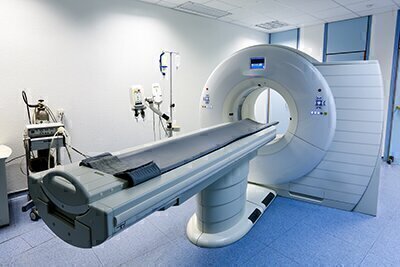 If you are scanned without a good reason, it can lead to anxiety, wrong diagnoses, false alarms, unnecessary procedures, and additional costs.
If you are scanned without a good reason, it can lead to anxiety, wrong diagnoses, false alarms, unnecessary procedures, and additional costs.
No medical specialty society recommends whole-body scans because there is no evidence that the scans are a good screening tool. Whole-body scans find cancer tumors in less than two percent of patients without symptoms. Some of these tumors would never cause a problem if left alone; they would disappear or grow too slowly to cause problems.
Whole-body scans can miss signs of cancer. The tests that are recommended—like mammograms—would probably find these signs.
Also, these scans expose you to high levels of radiation, the effects of which add up over your lifetime and can increase your risk of cancer. Multiple scans should not be performed unless medical evidence indicates that they would help.
A whole-body scan can provide a false sense of security, and prompt you to ignore real symptoms when they appear.
Better ways to make sure you don’t have cancer include monitoring for symptoms and getting regular checkups. To diagnose some cancers, there are simple, more effective tests, such as mammograms.
Adapted from Choosing Wisely bulletins produced by the American Society of Clinical Oncology and the American College of Preventive Medicine.
Pain Control
 Opioids are prescribed too often, and are seldom the best way to treat chronic pain, such as arthritis, low back pain, or frequent headaches. Before taking opioids for these problems, you should discuss other choices with your doctor.
Opioids are prescribed too often, and are seldom the best way to treat chronic pain, such as arthritis, low back pain, or frequent headaches. Before taking opioids for these problems, you should discuss other choices with your doctor.
Opioids are very addictive: Up to one in four people who take opioids long term become addicted. Over time, as the body gets used to opioids, they stop working as well. To get the same relief, you need to take more and more. Higher doses can cause serious side effects, such as nausea, vomiting, itching, constipation, serious breathing problems, and confusion. Worst of all, every day 46 Americans die from overdose of opioid painkillers, and hundreds need urgent medical care.
Short-term use of these medicines may help, but there is no
proof that they work well over time.
For migraines, opioids can make headaches worse, and they are not as effective as other migraine drugs.
Other pain treatments may work better and have fewer risks. Try these other treatments first:
- Over-the-counter medicines
- Exercise
- Physical therapy
- Spinal manipulation
- Massage therapy
- Acupuncture
- Injections, such as steroids
- Other prescription drugs, such as nonsteroidal anti-inflammatory drugs (NSAIDs) and anti-seizure drugs
Opioids can be appropriate if:
- You have cancer with severe pain. Opioids may be the right choice if pain is a bigger concern than the possibility of addiction and the need to keep increasing the dosage.
- You have chronic pain that is not caused by cancer. Use opioids only when the pain is strongest. Your doctor should check you often.
- You require around-the-clock pain relief or other pain management drugs aren’t feasible; for example, after surgery your pain-control choices might be limited so that blood clotting won’t be diminished.
When opioids are necessary, stick to the lowest dose possible. After surgery, using them for three days or fewer will often be enough, and more than seven days are only rarely needed. If you’re still in pain after three days, ask if you can use a medicine that isn’t morphine-based.
Adapted from Choosing Wisely bulletins produced by the American Society of Anesthesiologists, American Academy of Neurology, and American Urological Association.
Sleeping Pills for Insomnia
If you have trouble sleeping, you may be thinking about getting a prescription for sleeping pills. But these drugs may be overused, are often not the best option, and can cause other problems.
Although almost one-third of older people in the U.S. take sleeping pills, they may not be particularly helpful. Sleep studies show that they help people fall asleep only about eight to 20 minutes faster, and add less than 35 minutes to nightly sleep.
Sleeping pills have risks and side effects. One risk is that you may start to depend on them, and if you stop taking them you may sleep worse than you did before you tried the pills. This is why most doctors recommend taking them only occasionally, or for only a few days in a row.
Other risks and side effects may include daytime drowsiness, dizziness and hallucinations, and sleepwalking and sleep-eating.
Sleeping medications have special risks for older adults. Seniors are likely to be more sensitive to the drugs’ effects than younger adults. And the drugs can cause confusion and memory problems that more than double the risk of falls and hip fractures, common causes of hospitalization and death in older people. They also increase the risk of car accidents.
Over-the-counter sleep aids, such as antihistamines (Benadryl, Tylenol PM, and generic antihistamines), have risks, too. Ask your doctor if they are safe for you.
 A type of short-term counseling called cognitive behavioral therapy (CBT) is usually a better option than sleeping pills. With CBT you may learn new sleeping habits, for example:
A type of short-term counseling called cognitive behavioral therapy (CBT) is usually a better option than sleeping pills. With CBT you may learn new sleeping habits, for example:
- To get up at the same time every day.
- To stop watching TV in bed.
- How to calm your mind when you’re trying to sleep.
In the long term, CBT also may cost less than sleeping pills. The medications cost from $17 to $60 a week, with some newer drugs costing even more. And you’ll pay for doctor visits to obtain prescriptions. For CBT, you may need only six one-hour sessions with a psychologist.
Sleeping pills may be helpful if you have short-term insomnia
caused by a stressful event—such as a death in the family, a
major illness, or a divorce.
If you’ve been taking sleeping pills for a long time, ask your doctor how to stop. It may take days, weeks, or months to stop safely.
Your doctor may refer you to a sleep physician for a sleep study. In a sleep study, your body is observed as you sleep. But usually you only need a sleep study if you might have another sleep problem, such as sleep apnea, that is causing your insomnia.
Adapted from Choosing Wisely bulletins produced by the American Academy of Sleep Medicine and the American Geriatrics Society.
Vitamin D Tests
While low vitamin D increases the risk of broken bones—and may also contribute to other health problems—many people do not need tests for vitamin D deficiency.
 While many people have insufficient vitamin D in their bodies, few have seriously low vitamin D levels, and most people can make simple lifestyle changes to get enough, such as getting a little more sun.
While many people have insufficient vitamin D in their bodies, few have seriously low vitamin D levels, and most people can make simple lifestyle changes to get enough, such as getting a little more sun.
Even if you are at risk for other diseases, such as diabetes and heart disease, a vitamin D test usually isn’t helpful, as test results are unlikely to change your doctor’s advice. It is much more important for you to make lifestyle changes first: Don’t smoke, aim for a healthy weight, and be physically active. Try to get enough vitamin D from sun and foods, and ask your doctor about supplements.
Getting tests you don’t need often leads to treatments you don’t need, or treatments that can even be harmful. For example,
taking excessive vitamin D can damage your kidneys and other organs.
If your doctor recommends a vitamin D test, ask about your risks. If your risk is high, get the test; if your risk is low, ask if you can avoid the test.
Consider a vitamin D test if you have osteoporosis or a disease that damages your body’s ability to use vitamin D. These are usually serious and ongoing diseases of the digestive system, such as inflammatory bowel disease, celiac disease, kidney disease, liver disease, pancreatitis, and others.
Adapted from Choosing Wisely bulletins produced by the American Society for Clinical Pathology.


